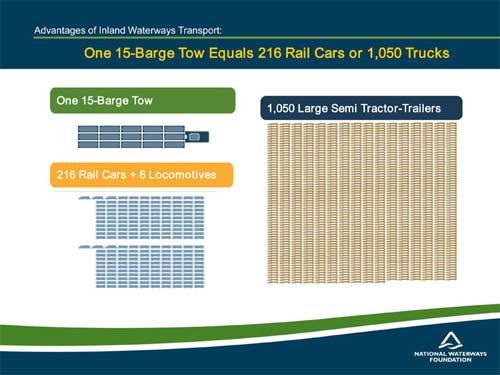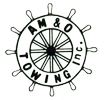As companies struggle to find ways to remain competitive, while staying in compliance with the ever-growing Federal regulations placed on businesses year after year, waterway shipping has emerged as a leader in fuel efficient shipping making it the “green transportation” king!

The winner in this category is calculated by comparing the amount of BTU’s (fuel) needed to carry one ton of freight one mile (also known as a ton-mile). By reducing the amount of traffic, congestion, fuel consumption and spills, barge shipping has proven to beat all other modes of freight transportation in terms of greenhouse gas emissions according to studies conducted by the Center for Ports & Waterways since the 1990s; says the National Waterways Foundation.
Waterway Shipping Is Safer
In addition to the huge savings on fuel consumption, waterway shipping has proven itself to be far safer for the public than transporting bulk commodities over our Nation’s highways and rail lines.
The U.S. Coast Guard has strict guidelines pertaining to the types of barges used in shipping various commodities, as well as guidelines for the personnel who can operate them. Any barge that is used for shipping hazardous materials must be “double hulled” to ensure leak containment, then inspected and re-certified by the Coast Guard every year.
The Inland Waterways System is just one inter-modal network within the entire pool of domestic transportation systems network, including truck and rail. The entire surface transportation system is becoming increasingly congested. The ability to expand this system in a timely fashion is constrained by both funding and environmental issues.
Many proponents of the Inland Waterways System point to providing an effective and efficient means of expanding capacity with less funding, having virtually unlimited capacity, and impacting the environment significantly less than the other modes of transportation.
Read the full 78-page report here.
